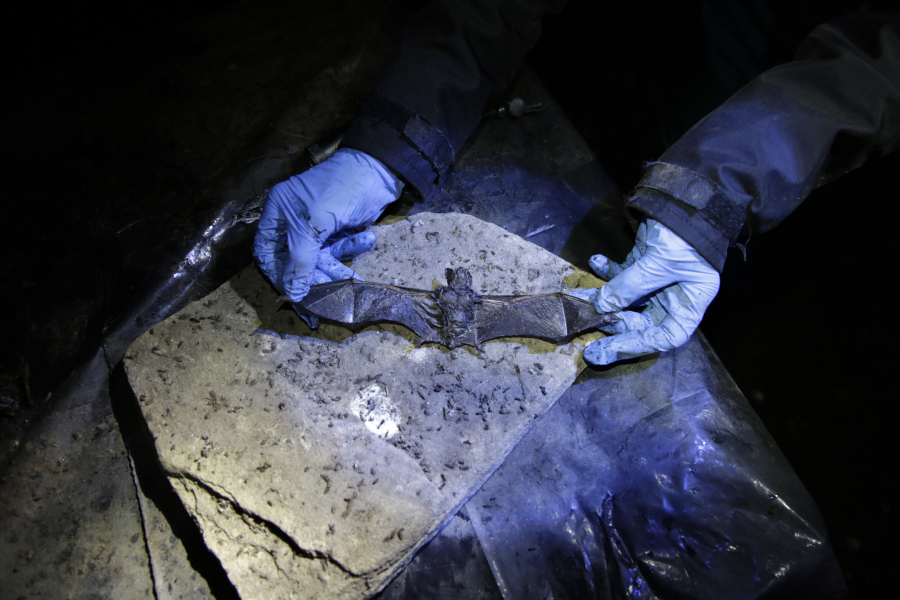DORSET, Vt. — Deep in a cool, damp cave in Vermont, tens of thousands of furry, chocolate-brown creatures stir.
The little brown bats, survivors of a deadly fungus that has decimated their population, went into hibernation last fall. Now in early May, they’re waking, detaching from their rock wall roosts and making their first tentative flights in search of the moths, beetles and flying aquatic insects they devour.
It was here, in deep passages that creep into a Vermont mountain, that scientists found one of the first North American outbreaks of the fungus that causes white nose syndrome. Bat bones litter the cave floor. Look closer, and you’ll find tiny skulls.
And the bats are still dying.
White nose syndrome is caused by an invasive fungus first found in an upstate New York cave in 2006, a short bat flight from the Dorset, Vt., colony. The fungus wakes bats from hibernation, sending them into the frigid, winter air in search of food. They die of exposure or starvation because the insect population is too sparse to support them that time of year.
Smaller than a mouse and about the weight of three pennies, the Dorset bats skitter across the cave walls or cling to one another for warmth. Their health hints that at least some species are adapting to the fungus that has killed millions of their brethren across North America.
“That’s really significant, because it seems to be a stronghold where these bats are mostly surviving and then spreading out throughout New England in the summer,” said Alyssa Bennett, a small-mammal biologist for the Vermont Department of Fish and Wildlife. She has studied bats and white nose syndrome for more than a decade.
“We’re hoping that it’s a source population for them to recover,” Bennett said as critters flitted around her.
It will take time. Little brown bat females birth only one pup a year. And while they can live into their teens or 20s, only about 70 percent of pups make it beyond their first 12 months, Bennett said.
Scientists now estimate that between 70,000 and 90,000 bats hibernate in the Dorset cave, the largest concentration in New England. Their numbers have dwindled from an estimated winter population of 300,000 to 350,000 in the 1960s, the last time the location was surveyed before white nose infiltrated.
The fungus that causes white nose syndrome is believed to have been brought to North America from Europe, where bats are apparently accustomed to it. Named for the white, fuzzy spots it produces on noses and other bat body parts, the fungus has killed 90 percent or more of the bat populations in parts of North America.



